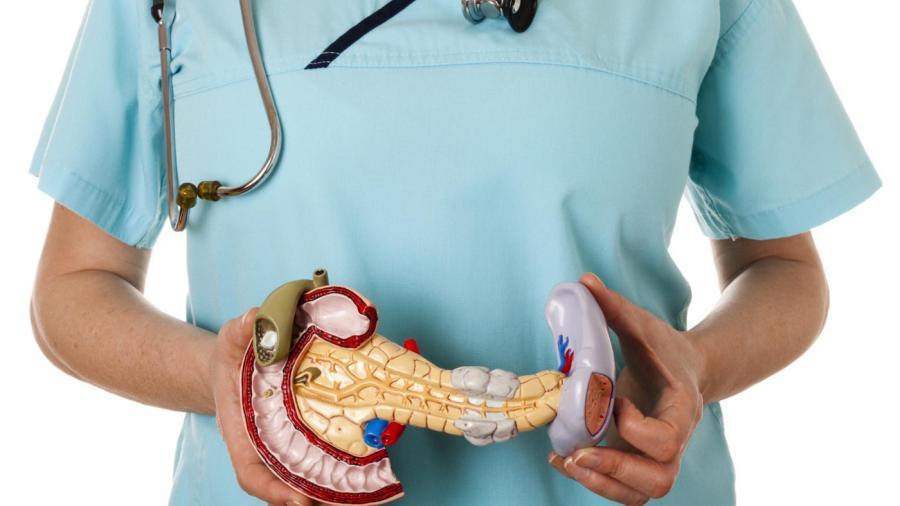What Are Some of the Symptoms That Indicate Problems With the Pancreas?

Pancreatic disorders can manifest through various symptoms, such as severe pain in the upper abdomen that indicates acute pancreatitis, or abdominal pain accompanied by diarrhea and malnutrition in the case of chronic pancreatitis, according to the National Pancreas Foundation. Symptoms such as painless jaundice are usually signs of pancreatic cancer.
Inflammatory disorders of the pancreas are usually accompanied by upper abdominal pain that radiates to the back, explains WebMD. This pain is usually aggravated when a patient consumes a fat-rich diet. Other general symptoms of pancreatitis, whether chronic or acute, include tenderness of the abdomen, fever, nausea, vomiting and an elevated heart rate.
Jaundice, a rapid pulse, oily stools and abnormal weight loss accompanied by radiating abdominal pain can also be a symptom of an enlarged pancreas, reports WebMD. This can be caused by a pancreatic pseudocyst, a benign cystadenoma, an infected pseudocystic abscess, or a cancerous tumor. The development of pancreatic cancer is usually asymptomatic until the time of presentation, at which time the patient presents symptoms of pancreatitis accompanied by severe itching, caused by increased levels of bile acid, states the National Pancreas Foundation. Hereditary pancreatitis causes symptoms such as malnutrition, chronic abdominal pain, diarrhea and diabetes, according to the NPS.





